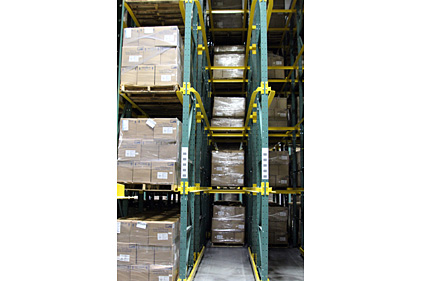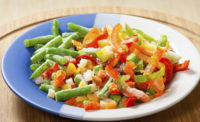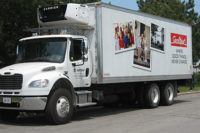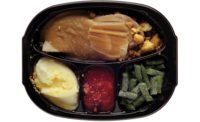Coloma Frozen Foods, Coloma, Mich., needed to consolidate its frozen storage capacity. As a provider of quality frozen fruits, vegetables, juices and cherry juice 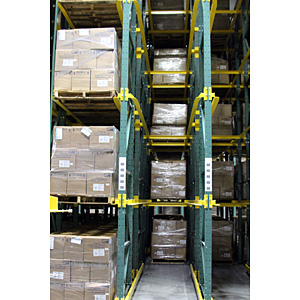 concentrates, the company had previously outsourced or leased its frozen storage to four commercial facilities spread out over a 20-mile radius in southwest Michigan.
concentrates, the company had previously outsourced or leased its frozen storage to four commercial facilities spread out over a 20-mile radius in southwest Michigan.
“Transferring product between four inter-company locations for production, frozen storage and repacking was costly and inefficient,” says Brad Wendzel, president of Coloma Frozen Foods. “One of the leased freezer facilities had aged beyond its useful life, and much of the racking was too low, requiring inefficient pallet unstacking and restacking before shipping.”
To optimize its growth and logistics, Coloma Frozen Foods built a 90,000-square-foot freezer space, including 75,000 square feet of racked freezer space, in a new centralized campus facility. Looking to maximize frozen storage efficiency and repacking capability, Wendzel turned to Southwest Docking and Handling, a Dowagiac, Mich.-based material handling and automated systems distributor, and Steel King Industries, a storage system and pallet rack manufacturer based in Stevens Point, Wis.
Both companies suggested drive-in racks for a cost-effective, high-density storage capacity that requires fewer aisles and provides better cube utilization. Drive-in racks enable storing up to 75% more pallets than selective racking and are ideal for high-traffic and cooler/freezer installations.
“We expect to save about $150,000-$200,000 a year in reduced labor, management, transportation, energy and maintenance costs using the drive-in rack at our campus facility,” says Wendzel. “Our growth potential is substantial, and we expect return on investment in under two years.”
With drive-in racks, forklifts drive directly into the rack to allow storage of two or more pallets deep. But, because forklifts drive directly into the rack, they tend to take more abuse than other rack structures.
“In freezer applications, the rack is susceptible to forklift impact because reaction time is slower in a cold environment and peripheral vision can be restricted when operators are bundled up against the cold,” says Wendzel. “So, rack durability, longevity, ease-of-use and safety were vital to us.”
Wendzel was also concerned that the industry’s typical, light gauge, roll-formed rack would be prone to forklift damage and costly replacement.
That’s why Coloma Frozen Foods selected Steel King’s SK3000 pallet rack, a rugged bolted rack with structural channel columns.
Compared to typical racking, the pallet rack is constructed of hot-rolled structural channel column with full horizontal and diagonal bracing, offering greater frame strength, durability and cross-sectional areas. All Grade-5 hardware provides greater shear strength, and a heavy 7-gauge wrap-around connector plate ensures a square and plumb installation with a tighter connection and greater moment resistance.
“Over 23,000,000 pounds of frozen product are stored in Coloma Frozen Foods’ freezer and rack space, including 9,000 pallet positions of 4-inch structural c-channel drive-in rack,” says Wendzel. “The rack is five levels high, including floor level, and arrayed from 2-5 pallet positions deep for both storage efficiency and an ability to accommodate a range of SKUs. With the drive-in rack’s efficient frozen storage, we’ve consolidated our operations on one campus and aim to double our repack capability. The interest and amortization of our new facility is less than what we paid for commercial storage.”
Compared to typical racks, the drive-in rack includes a number of features that enhance ease-of-use and safety.
For starters, the drive-in load rail construction includes flared rail entry ends to allow easy bay access, space-saver, low-profile arms that increase clearance and decrease possible product damage, structural angle rails that “guide” pallets for ease of use, welded aisle-side load arms that eliminate hazardous load projections into aisles and welded rail stops that prevent loads from being pushed off and increase safety, according to Jim Nowicki, president of Southwest Docking and Handling.
For added protection against forklift impact, a forklift tire rub rail mounts near the floor to guide the vehicle safely into the rack. All uprights and columns are oversized baseplates for greater rack stability. Two-inch vertical adjustability of the bolted drive-in rack also allows for a variety of configurations for current or future products.
“The efficient frozen storage of our drive-in rack has been key in helping us to expand, cut cost and improve safety while consolidating our facilities,” adds Wendzel.
